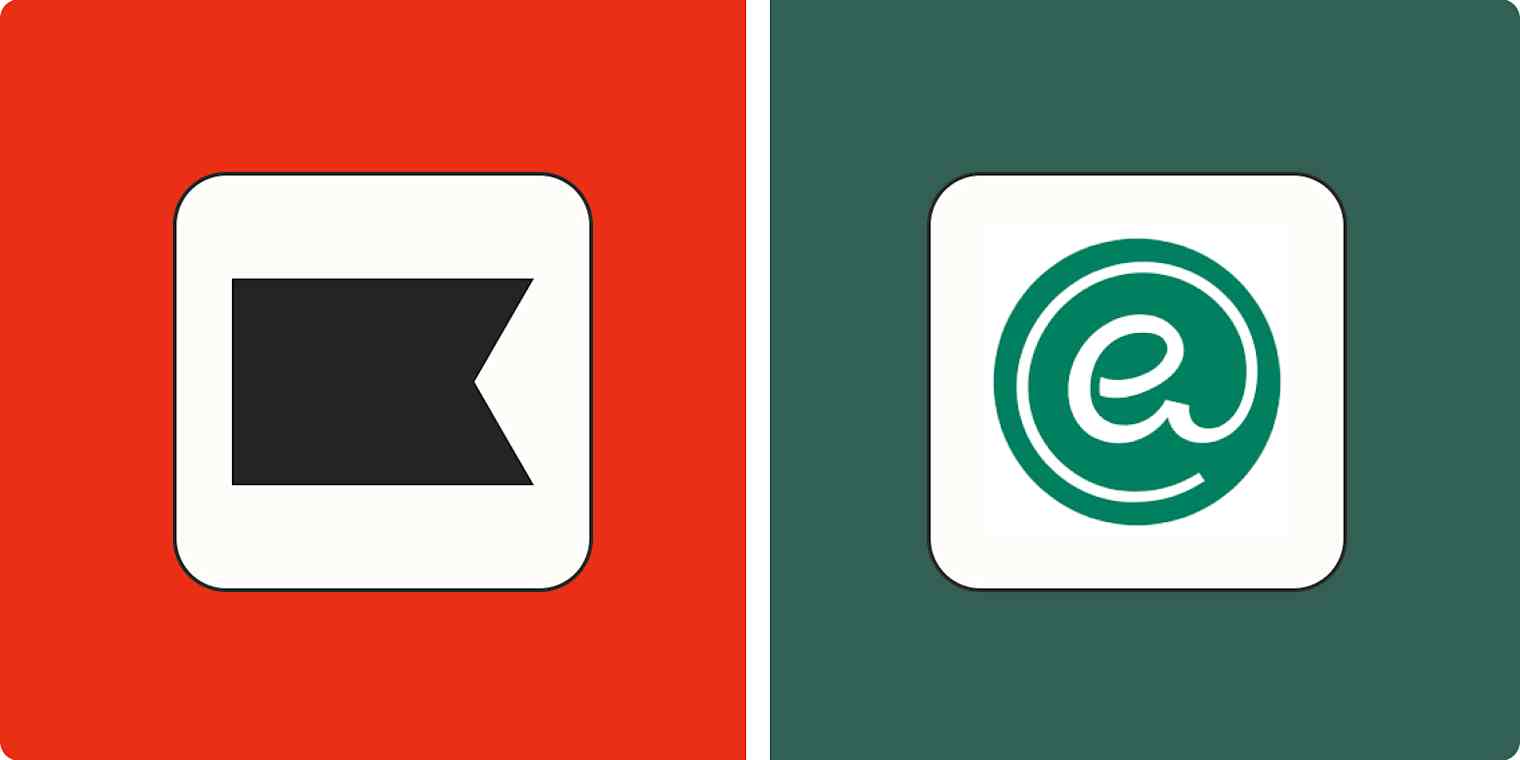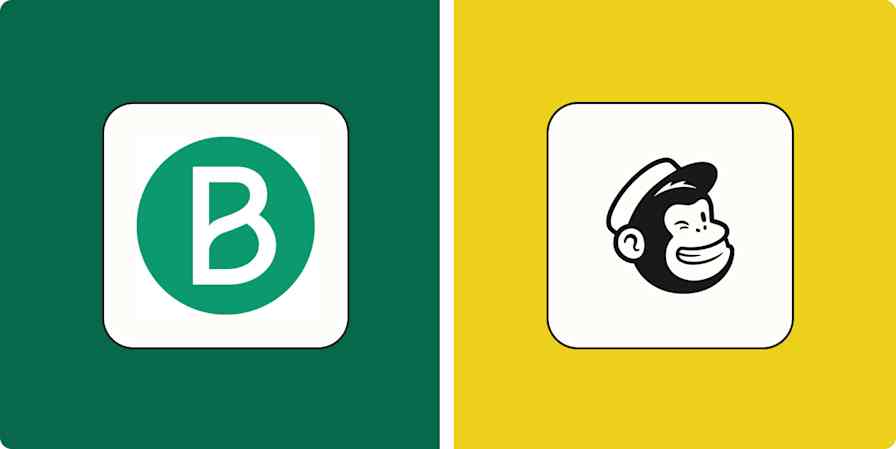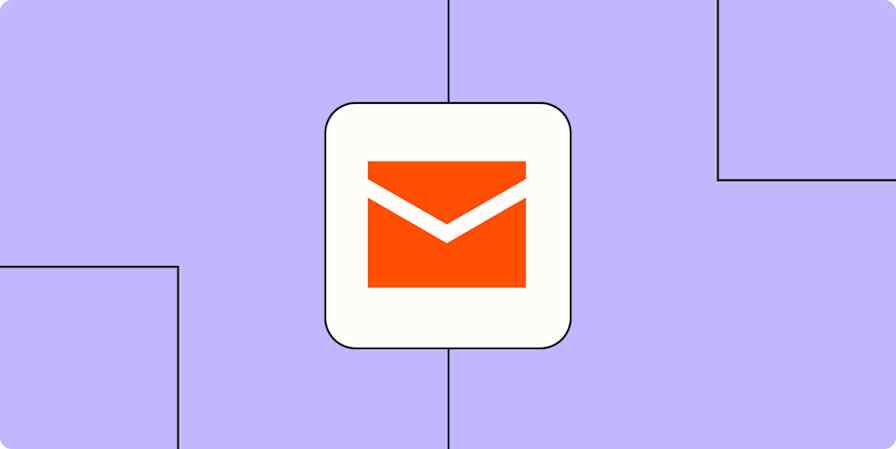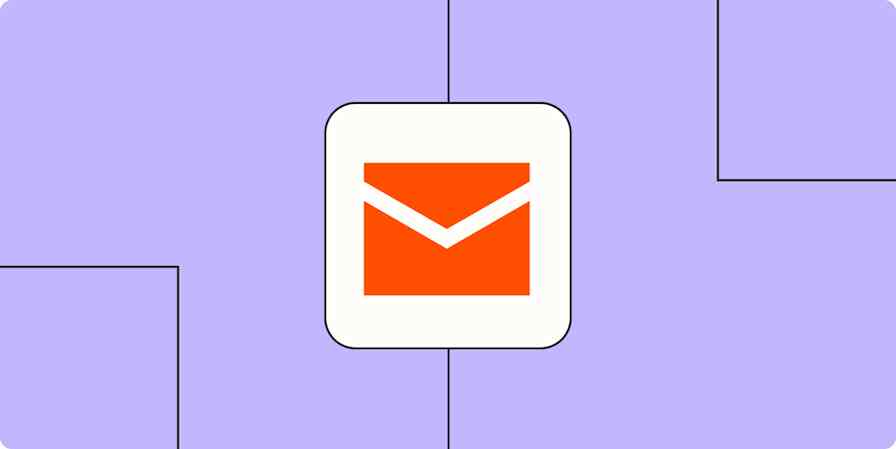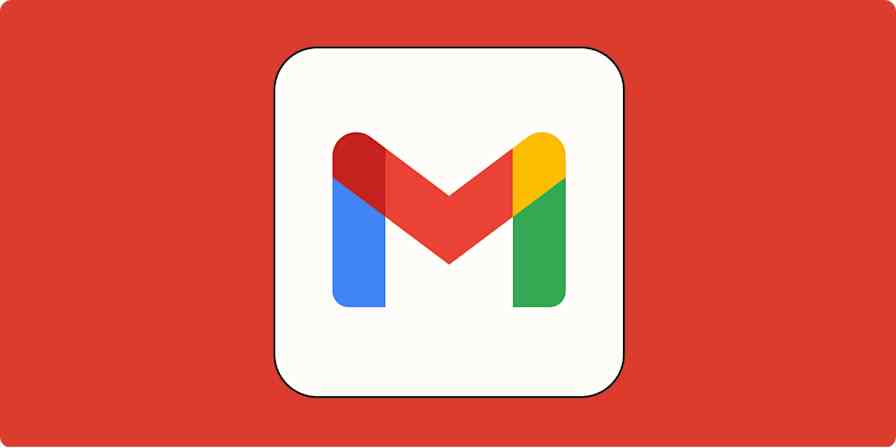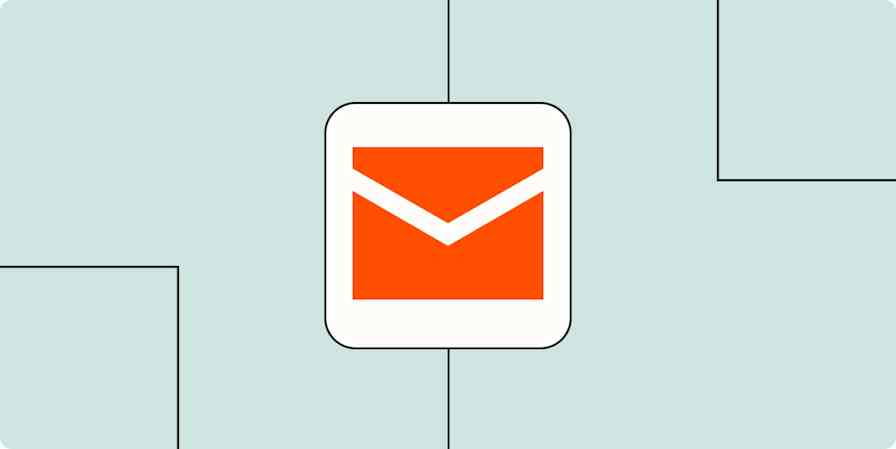If you're looking for a David-and-Goliath story in the world of email marketing, tinyEmail-and-Klaviyo might be as close as you'll get. (Although—spoiler alert—Goliath might win this round.) While both are eCommerce-focused email marketing apps that integrate tightly with Shopify, that's where the similarities end. tinyEmail launched a few years ago and is mainly known for its free Shopify app; Klaviyo was launched in 2012 and is now a publicly-traded company worth billions of dollars. (Shopify owns 11% of Klaviyo.)
If you run an eCommerce store—especially if you're on a budget—you might be wondering if tinyEmail's straightforward email marketing app will meet your needs, or if you're better off with Klaviyo's more advanced email marketing platform.
I've tested tinyEmail and Klaviyo in the past; for this article, I spent time with both apps to compare the strengths and limitations of each. In this article, I'll share what I found so you can decide which makes sense for you.
Table of contents:
Klaviyo is better for most eCommerce shops, but tinyEmail is a solid option for beginners
tinyEmail is free for Shopify merchants, but Klaviyo offers surprisingly good value
Klaviyo vs. tinyEmail at a glance
Here's a quick overview to help you compare these two apps:
tinyEmail is best for small Shopify stores. With its impressive template library, easy-to-use automation builder, and free Shopify plan, tinyEmail is a solid option for brands with straightforward email marketing needs.
Klaviyo is best for growing eCommerce brands looking for a full marketing automation solution. It's a multichannel platform that allows you to coordinate automations for emails, reviews, SMS, and mobile push notifications; it also offers advanced personalization, workflows, and AI features. And with entry-level plans starting at $20/month, it offers surprisingly good value.
Klaviyo | tinyEmail | |
|---|---|---|
eCommerce | ⭐⭐⭐⭐⭐ Klaviyo is better for most eCommerce shops; its automation, personalization, and AI features make it a more versatile platform; its integrated CRM is a bonus. | ⭐⭐⭐ Small eCommerce shops will appreciate tinyEmail's ease of use, but larger brands will encounter growing pains due to limited features. |
Ease of use | ⭐⭐⭐⭐ Most tasks, like designing emails, are easy in Klaviyo. But since there are so many features, beginners can get bogged down. A new AI answers tool helps speed up the learning curve. | ⭐⭐⭐⭐⭐ With a gentle learning curve, tinyEmail makes it easy to get up and running—especially if you use Shopify. |
Automation | ⭐⭐⭐⭐⭐ Klaviyo has advanced automation features, a visual workflow builder, and prebuilt workflows. You can also create automations with AI. | ⭐⭐⭐ tinyEmail can now create full custom workflows instead of simple one-click automations, making it a much more effective email marketing tool; it's less powerful than Klaviyo, though. |
Segmentation | ⭐⭐⭐⭐ You can segment based on user behaviors and purchase data, and even show personalized offers to customers with certain items in their cart. | ⭐⭐⭐ Decent segmentation features; prebuilt segments let you quickly email preset groups like your newest contacts or dormant subscribers. |
AI features | ⭐⭐⭐⭐⭐ Klaviyo AI helps you create segments, workflows, A/B tests, follow-up emails, and much more. | ⭐ Surprisingly sparse. You can use AI to generate subject lines, but that's about it. |
Analytics | ⭐⭐⭐⭐⭐ Klaviyo has dozens of reporting options, and you can navigate them using simple searches to find the data you need. Predictive analytics helps you estimate customers' next order date, churn risk, and lifetime value. | ⭐⭐⭐ Solid analytics that are easy to understand, plus revenue-tracking features, but you can't make custom reports. |
Pricing | ⭐⭐⭐⭐ Klaviyo offers a full-featured free plan and competitive paid plans. You'll pay $20/month for 5,000 monthly emails, $45/month for 15,000 monthly emails, and $100/month for 50,000 monthly emails. | ⭐⭐⭐⭐ tinyEmail offers a solid free trial, and if you're a Shopify user, you can get tinyEmail for free via the Shopify app store. But there's no longer an affordable entry-level plan: you'll pay $65/month for 15,000 monthly emails. |
Integrations | ⭐⭐⭐⭐⭐ 350+ built-in integrations; connects with thousands of apps via Zapier. | ⭐⭐⭐⭐ Around 30 built-in integrations; connects with thousands of apps via Zapier. |
tinyEmail has a gentler learning curve
As you might guess from tinyEmail's friendly branding, it's aimed at small to mid-sized eCommerce shops, rather than technical or enterprise users. That means that above all, the platform needs to be simple to use. Is it? You bet.
tinyEmail's onboarding process is simple. It streamlines the intake of your business information by scanning your domain name, using what it finds to create a brand kit that will automatically populate your email templates later.

To send your first email, it's easy enough to navigate to Email Templates and pick from among the large library of 300+ templates, which range from SaaS newsletters to reactivation emails. From there—like any other drag-and-drop editor you may have used—it's just a matter of pulling blocks and modules into your email until it's just like you want it.
While tinyEmail's user interface isn't the slickest on the market, its recently-refreshed email design tool brings it much closer to the standards set by bigger competitors. More importantly, everything is intuitive: I never once found myself digging through product documentation to figure out how to do something.

tinyEmail's ease of use extends to its more unique features, too. To add eCommerce-focused elements to your emails, you just drag and drop them as you would any other content block. For example, the drag-and-drop expired timer module lets you add a dynamic countdown to your email; once the date of your sale or event is over, you can automatically replace the countdown with another image so customers aren't confused. All of this can be done using a toggle and a couple of settings within tinyEmail's editor.

Klaviyo is generally user-friendly, too—though because of its broad set of features, it's tough for it to match the pure simplicity of tinyEmail. Still, it's surprisingly easy to navigate given how powerful it is. There's plenty of hand-holding: Klaviyo's onboarding process nudges you toward the easiest ways to get started, with step-by-step tutorials for each activity.
There's also a genuinely useful AI answers feature. During my testing, it offered detailed instructions for every query I could think of; and when I asked about made-up features that Klaviyo doesn't actually have, it avoided the common AI trap of hallucinating incorrect answers.

Klaviyo's core features, like email design, templates, and reporting, are straightforward. Like tinyEmail, there's a built-in brand kit to streamline email customization; there's no shortage of prebuilt email templates either, with 250+ options from "Back-to-School" to "Black Friday." While some of Klaviyo's older templates are clunky, its newest templates—mostly designed by outside agency partners—are a good fit for the aesthetic of many eCommerce brands.

The drag-and-drop email editor is slicker than tinyEmail's editor, despite having more features to navigate. It's easy to drag standard image and text blocks into your email, add entire prebuilt sections, or import frequently-used "universal components" to keep certain sections consistent across all your emails.

Here's one especially useful feature: you can apply conditional logic to each content block, so only certain members of your email list can see it. (I haven't come across this in many other email marketing tools.) This opens up interesting opportunities for personalization. For example, a clothing company could promote flannel to customers in Vancouver and swimsuits to customers in Florida—all within the same email.
The only drawback? You need to use clunky boolean commands to do this (e.g., person|lookup:'Bag Preference' == 'Work' ). As you might expect, the more into-the-weeds you get in Klaviyo, the more you're likely to encounter difficult-to-understand terms. For example, importing customer profiles involves choosing your data type: string, numeric, boolean, and so on. Unless you're an expert user, Klaviyo's most advanced features require navigating the help guide to figure out what to do.
Klaviyo is better for most eCommerce shops, but tinyEmail is a solid option for beginners
Klaviyo's advanced automation capabilities and visual workflow builder make it a better fit for mature eCommerce shops that rely on campaigns triggered by subscriber behaviors and transactional emails. Automations are easy to put together thanks to Klaviyo's Flow Library, a collection of prebuilt marketing automations including Welcome Series, Abandoned Cart, and Replenishment Reminders.

Overall, it's a little limited: there are only a handful of prebuilt automations in Klaviyo, while ActiveCampaign, for example, has hundreds.
That said, automation templates aren't as necessary as they used to be. Klaviyo recently launched an AI-powered workflow builder that lets you use natural language to generate any automation you can think of.

Klaviyo's segmentation abilities are stronger than tinyEmail's, with segmentation possible based on user behavior, purchase data, and more. I like how Klaviyo comes with some segments already activated: by default, you'll see Engaged Subscribers, New Subscribers, and SMS Subscribers. You can also use the Segment Builder to automatically group subscribers by behaviors (like opening an SMS message) or traits (like proximity to a certain location).
You can also use AI to create segments. This is a solid time-saver, since creating segments manually requires a fair bit of clicking around—it's tough to know whether the segment field you need is behavioral, predictive, or something else.

Dynamic forms are another helpful eCommerce feature built into Klaviyo: they integrate directly with your website and can change depending on the user. (For example, you could promote an attractive offer only to customers who've been highly engaged in the last 30 days.) You can personalize forms and popups using parameters like your visitor's location, behaviors, device type, and the contents of their cart.

Klaviyo also recently added Customer Hub, a portal that allows your shoppers to view their order history, chat with customer service, find coupons and offers, and discover new products.

tinyEmail doesn't have nearly as much to offer eCommerce marketers as Klaviyo. That said, if your needs are relatively simple, you'll probably be able to make do with tinyEmail's more limited feature set. It's also upgraded some key features recently.
For example, it used to only offer simple "one-click" automations that were easy to launch but impossible to customize. But tinyEmail's workflow capabilities have gotten an upgrade: you can now access a full-fledged custom automation builder, complete with triggers, delays, and conditional splits. While tinyEmail's builder isn't as impressive as Klaviyo's, it's easy to use, allows you to create complex automations, and represents a significant improvement over the earlier version of this feature.

Unfortunately, tinyEmail doesn't offer many automation templates. Most users get just a handful of predesigned workflows like Abandoned Cart, though you'll see more options if you connect tinyEmail to an eCommerce tool.

tinyEmail's segmentation and forms features fall into the same category: not as impressive as what Klaviyo offers, but a convenient option for beginners. You can use prebuilt segments to separate users into categories like Dormant Subscribers, Engaged Subscribers, or New Subscribers from Shopify. You can also create custom segments based on your audience's characteristics or behavior.
Meanwhile, tinyEmail's forms aren't the most attractive out there, but they're functional and integrate seamlessly with your email list. You can choose from a few dozen templates or create your own.

Klaviyo offers more advanced features
These days, most email automation providers have incorporated AI into their platforms. But tinyEmail seems to only just be rolling it out: its sole feature is an AI subject line generator. While the tinyEmail team is working on more AI features—including predicted audiences, automated prebuilt sequences, and an AI email copywriter—they've been on the roadmap for over a year with no release in sight. Overall, this just isn't the platform to go with if you're serious about AI.
Klaviyo, meanwhile, has reoriented its entire platform around AI. In addition to the AI workflow and segmentation builders I mentioned earlier, you can also use Klaviyo AI to create on-brand emails, optimize web forms, generate SMS campaigns, and predict customer behaviors. (There's also a lot of AI powering Klaviyo's analytics, which I'll explore in the next section.) You'll encounter most of these AI features contextually as you're creating campaigns; for example, Klaviyo automatically prompts you to use AI to create subject line variations for A/B testing.

Another practical AI feature is Klaviyo's automated follow-up email. Klaviyo automatically generates a second email for non-openers so you can boost engagement—just click Add a follow-up email and choose your preferred parameters.

Klaviyo is also a better fit if you're looking for email marketing-adjacent features. You can incorporate SMS messages into the same workflows you use for email, making it easy to use your customers' preferred method of notifications. Even cooler, you can do the same for push notifications if your brand has its own mobile app: Klaviyo links up with iOS, Android, and React. (tinyEmail is working on an SMS feature, but it hasn't launched yet.)
Klaviyo can also manage the customer review experience with its Reviews platform, which integrates directly with Shopify and Shopify Pro and handles things like review requests, follow-up, and verification. These features do cost extra: the Reviews add-on starts at $25/month, and you'll pay around $0.01 per SMS message, depending on the quantity.
Klaviyo's analytics are more robust
For ease of comprehension, tinyEmail's analytics are tough to beat. You get a solid set of analytics, including delivery reporting, location and platform data, and individual metrics for each campaign. Once you link tinyEmail to your eCommerce platform, you can also use the Analytics tab to track the revenue you generate via email, as well as benchmark your performance against similar businesses.

Klaviyo's analytics aren't as clear-cut as tinyEmail's, but they're incredibly thorough. There's so much data to parse through that the Analytics section is divided into six subsections: Dashboards, Experiments, Metrics, Benchmarks, Deliverability, and Custom Reports. You can browse the reports library for dozens of reporting options, like Revenue by Month, Email Deliverability by Campaign, and Engagement by City.

Klaviyo's AI features are deeply integrated into its analytics. One useful AI-powered insight is the predictive analytics feature, which helps you forecast your customers' next order date, churn risk, lifetime value, and spending potential.

tinyEmail is free for Shopify merchants, but Klaviyo offers surprisingly good value
tinyEmail is still the best choice for price-conscious Shopify users who don't need all of Klaviyo's bells and whistles: Shopify's app store gives you access to tinyEmail for free. There's also a free trial—available to all users—during which time you get full access to tinyEmail's features and can send a total of 15,000 emails before you get prompted to upgrade to a paid plan.
Klaviyo's free plan, which is good for up to 250 subscribers, is unusually full-featured: you can access nearly all of Klaviyo's capabilities. You also—in a rarity in the email marketing space—get 150 free monthly SMS credits on any plan (including the free plan). For more SMS credits, you can buy bundles that come out to around $0.01 per SMS.
Until recently, tinyEmail had a $15/month entry-level plan that positioned it as a more affordable option for everyone than pricier competitors like Klaviyo. But that dynamic has entirely reversed: tinyEmail's cheapest plan is now $65/month for 15,000 emails, while Klaviyo has introduced an affordable $20/month plan offering up to 5,000 emails per month.
And Klaviyo offers competitive pricing given the breadth of its features. You'll pay $20/month for up to 500 subscribers and 5,000 monthly sends, $45/month for up to 1,500 subscribers and 15,000 monthly sends, and $100/month for up to 5,000 subscribers and 50,000 monthly sends. If you're planning to add extras like Reviews or SMS, though, prepare to pay more.
Both have a variety of integrations, including Zapier
Klaviyo has hundreds of native integrations and works with nearly every eCommerce platform, from enterprise (Salesforce) to small business (Wix). You can even connect your Klaviyo account directly to TikTok Audiences and use your email segments for retargeting and lookalike ad campaigns.
tinyEmail has around 30 integrations, focusing primarily on email, payments, and CRM platforms. However, it does link up with most major eCommerce platforms, including Shopify, WooCommerce, and Volusion.
Want to expand your options beyond these native integrations? With Zapier, you can connect either Klaviyo or tinyEmail to thousands of other apps. Learn more about how to automate Klaviyo, or get started with one of these automation workflows for Klaviyo and tinyEmail.
Add contacts to a Google Ads customer list for new events on Klaviyo
Add or update subscribers in TinyEmail from new or updated rows in Google Sheets
Create or update TinyEmail subscribers from new Squarespace Forms form submissions
Zapier is a no-code automation tool that lets you connect your apps into automated workflows, so that every person and every business can move forward at growth speed. Learn more about how it works.
tinyEmail vs. Klaviyo: Which is best for you?
If you're still not sure which app is right for you, here are some parting thoughts to consider.
Choose tinyEmail if you're looking for a straightforward email solution for a small Shopify store. It's easy for beginners to use, offers a solid set of templates to help you get started fast, and lets you build complex automations. Plus, as a Shopify user, you'll get access to tinyEmail for free.
Choose Klaviyo if you run a growing eCommerce business and are looking for more than just the basics. You'll get impressive personalization features, an ever-growing list of AI tools, and workflows that unify your emails, SMS, mobile notifications, and reviews. And with paid plans starting at $20/month, Klaviyo offers surprisingly good value.
If neither app has what you're looking for, here's a list of the best email marketing software to consider, including other options that are great for eCommerce.
Related reading:
This article was originally published in June 2024. The most recent update was in June 2025.
